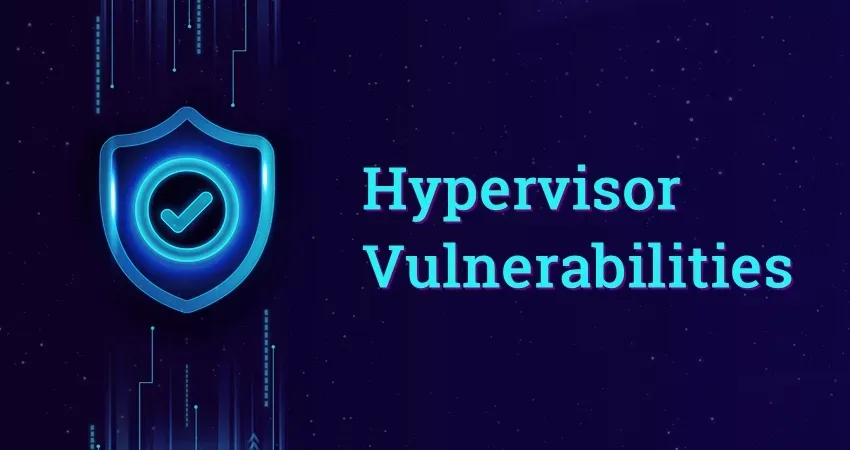A lot of organizations in this day and age are opting for cloud-based workspaces. It offers them the flexibility and financial advantage they would not have received otherwise.
Moreover, employees, too, prefer this arrangement as well. It allows them to work without worrying about system issues and software unavailability. Moreover, they can work from any place with an internet connection.
This has resulted in the rise in the use of virtual machines (VMs) and hence in-turn hypervisors.
Hypervisors are the software applications that help allocate resources such as computing power, RAM, storage, etc. for virtual machines.
System administrators are able to manage multiple VMs with hypervisors effectively. The best part about hypervisors is the added safety feature. This enables organizations to use hypervisors without worrying about data security.
Yet, even with all the precautions, hypervisors do have their share of vulnerabilities that attackers tend to exploit.
Here are some of the highest-rated vulnerabilities of hypervisors.
List of Hypervisor Vulnerabilities
When the server or a network receives a request to create or use a virtual machine, someone approves these requests.
Now, consider if someone spams the system with innumerable requests.
In the process of denying all these requests, a legit user might lose out on the permission, and s/he will not be able to access the system.
Many attackers exploit this to jam up the hypervisors and cause issues and delays. This is the Denial of service attack which hypervisors are vulnerable to.
When someone is using VMs, they upload certain files that need to be stored on the server.
Attackers can sometimes upload a file with a certain malign extension, which can go unnoticed from the system admin.
When these file extensions reach the server, they automatically begin executing. Attackers gain access to the system with this.
The hypervisors cannot monitor all this, and hence it is vulnerable to such attacks.
Also Read: Differences Between Hypervisor Type 1 and Type 2
Many times when a new OS is installed, a lot of unnecessary services are running in the background.
The system admin must dive deep into the settings and ensure only the important ones are running.
Not only do these services eat up the computing space, but they also leave the hypervisors vulnerable to attacks.
Attackers use these routes to gain access to the system and conduct attacks on the server.
Small errors in the code can sometimes add to larger woes. If an attacker stumbles across errors, they can run attacks to corrupt the memory.
These can include heap corruption, buffer overflow, etc.
When the memory corruption attack takes place, it results in the program crashing.
This can cause either small or long term effects for the company, especially if it is a vital business program.
A hypervisor is developed, keeping in line the latest security risks.
Developers keep a watch on the new ways attackers find to launch attacks.
Once the vulnerability is detected, developers release a patch to seal the method and make the hypervisor safe again.
But, if the hypervisor is not updated on time, it leaves the hypervisor vulnerable to attacks.
Conclusion
Hypervisors are indeed really safe, but the aforementioned vulnerabilities make them a bit risky and prone to attack.
Though developers are always on the move in terms of patching any risk diagnosed, attackers are also looking for more things to exploit.
Overall, it is better to keep abreast of the hypervisors’ vulnerabilities so that diagnosis becomes easier in case of an issue.
Moreover, proper precautions can be taken to ensure such an event does not occur ever or can be mitigated during the onset.
You May Also Like to Read:
What are the Advantages and Disadvantages of Hypervisors?

